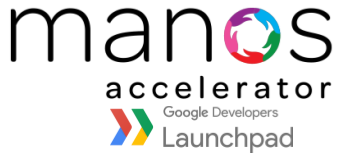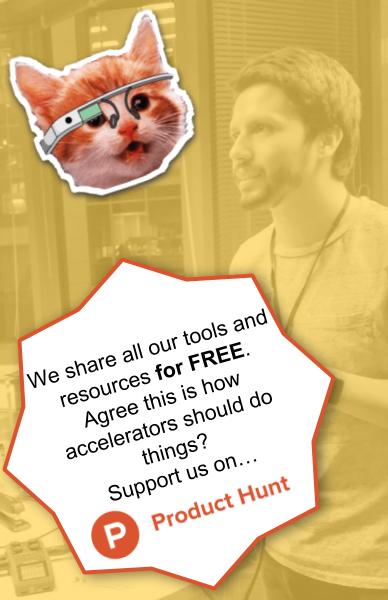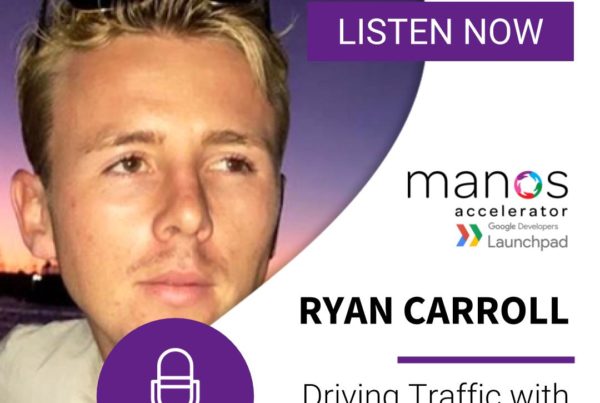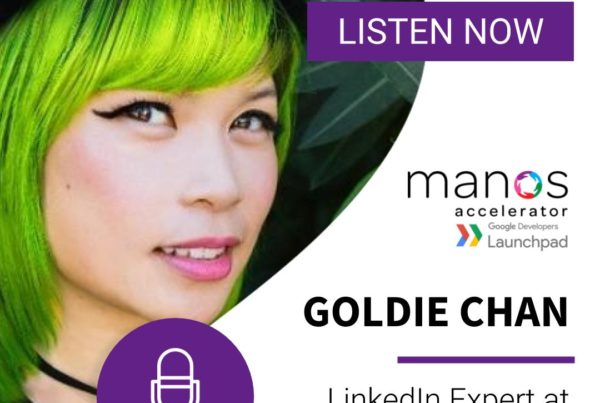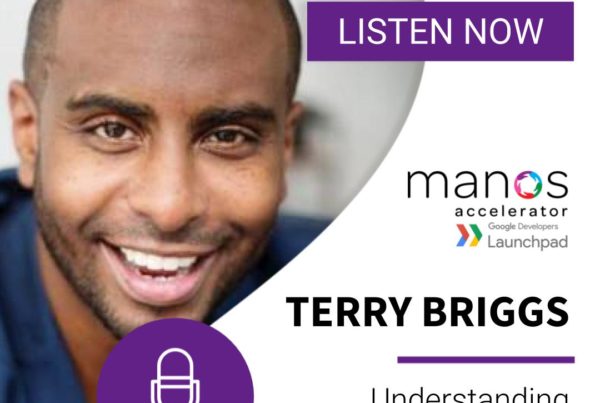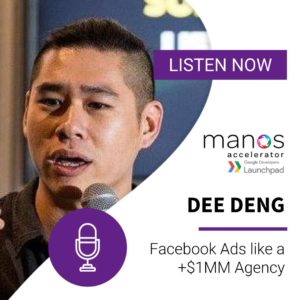 Dee has grown a men’s fashion label from startup to $1M company in 90 days using Facebook Ads. He has also generated $570,000 worth of new business for a finance client with a $9,000 advertising budget. Dee Deng has led his agency to +$1.2M ARR within 6 months.
Dee has grown a men’s fashion label from startup to $1M company in 90 days using Facebook Ads. He has also generated $570,000 worth of new business for a finance client with a $9,000 advertising budget. Dee Deng has led his agency to +$1.2M ARR within 6 months.
Want to learn about Facebook Ads?
Learn from Dee. This episode is full of golden nuggets 🚀
SUBSCRIBE
Show Notes
Hello and welcome to another episode of the Manos accelerator podcast. Today I am with…
Dee: 00:53 Dee Deng, that’s me.
Juan: 00:56 and you’re working on.
Dee: 00:58 I’m working on being the head of growth for Red Hook digital and we’re a growth agency that focuses on the three pillars of acquisition, conversion and retention.
Juan: 01:06 I love it. I love it. Tell us a little bit about your background in terms of like revenue or customer base or some amazing clients you’ve worked with
Dee: 01:12 for sure. Um, so we were actually really young shop are only six to seven months old and we were, we knew that we were chasing case studies the whole time. So one of the favorites stories I’d like to tell right now, and actually you can find it on my linkedin too, is this one client that came to us, they had product market fit, they were doing around 50 k a month and within three months my team and I were mad at managed to bring them up to a quarter of a million dollars in monthly revenue. So that was bringing a four to five x return on Ad spend. Yeah, it’s really, it’s really fun stuff. What we get to do and you know, we get every client and we that we try to take on and we’d like to call them client partners. Um, and that’s, that’s effectively what we try to do. We really want to weave into their team, give them the high level super impactful stuff because again, selfishly for us were chasing in case studies, right? We want to make all these clients successes, put them front and center in front of us, and really get those results.
Juan: 02:16 I love that, man. That’s amazing. So I, I, the reason I’m bringing into the show D, I know you’re a rockstar entrepreneur. You’ve gotten a lot of experience with Ad spend and being able to execute things at scale that get results and I love it that you’re working in the kind of business that if you’re not bringing in enough results, you guys get fired. And that’s perfect because that is for, for the listener sitting at home. They’re trying to do DIY boot-strapping. They’re bootstrapping their startups. So they’re trying to figure out what’s going to help them get to the next level. Uh, can you please share with us one golden nugget, one thing of expertise, your favorite tactic that works out really well right now in 2018,
Dee: 02:51 of course. So if you’re bootstrapping and you know, I know that space very well because I’ve lived that bootstrapping phase for my own startup four, five years ago. If you’re, if you’re bootstrapping and you are going into the land of paid acquisition on facebook, for example, I would say first things first is definitely skill up, so what I mean by that is you don’t have to go out and buy some crazy courses. First things first, go to the facebook blueprint which is free official from facebook just so you can scale up and understand the core mechanics of how facebook works, which is the options, which is the audience, ect, and then the next step from there is start with very small tests so you don’t, you know all these case studies that you’re online. You’re going to get some really big numbers and it makes him feel really intimidating for you based on your startup.
Dee: 03:36 If you are pre product market fit, create some ads not with with the objective of just social proof, so you want to optimize them for engagement just so that you can see what comes back and what people are actually engaged with it. What does that tell you? The feedback that you’re looking for cause you have to be scientific with is you want to, you want to check your product offering resonates with the audience, your sales copy and your creative resonates with the audience too, and then based off of that, you can then turn that into, for example, a conversion ad if you want to collect, if you actually want to seal the deal and make people convert or you can then have a optimized for website registrations. For example, if you’re running a webinar or if you want to optimize for the lead magnet, just so you can collect leads.
Juan: 04:19 That’s amazing. So do you find that there are some businesses that facebook ads aren’t a good fit for or is it pretty much any company, if you’re in the early stage, you should at least be playing around with them.
Dee: 04:30 You should. You should definitely be playing around with them. And here’s the thing, we’re playing around with them does not necessarily mean that you have to be dropping money. For example, if you have a website, you really should be pulling the facebook pixel on your website because the visitors that come into your website, they get pixeled by facebook and facebook knows so much about us as much about your audience that once you get, you know, good traffic volume traffic, like a thousand visitors a month, a thousand visitors a day, facebook can start recognizing patterns of these people that start showing up to your website. You can then take that as a custom audience and then market to those people and advertise to those people with a lot of specificity.
Dee: 05:09 So that’s why for even if you’re not, you don’t intend to advertise on facebook anytime soon in the near future, like one week or the next month. Ensure that you have the facebook pixel installed. And that’s why I’m saying go read the facebook blueprint. It actually walks you through how to do that so you’re not. You’re not messing about. You get it in their traffic. Might be organic traffic, might be from, you know, going on Reddit or traffic might be from your podcast, but you can turn these people into buckets that you can then market to visiting.
Juan: 05:40 Do you have a pulse on about how much money we need to be spending either per day or per month to actually be seeing results, how little is too little and at what point is the sweet spot?
Dee: 05:49 Um, so there are, there are several philosophies around this, right? The one that we like to use is what is your deal size versus, um, your conversion rate and what are you trying to chase here? So for example, if you’re in the business business space, and we do this for a one arm of our business is we drive leads for business business clients where we’re bringing them highly qualified leads. So each deal for them could be up to $10,000, $20,000. Now you’re spending $50 on facebook, proportionately does not, does not make any sense. And that’s where the testing starts with a smaller amount. Whereas if you are just trying to collect emails, say for example you have an Ebook, a that’s coming out around conversion rate because you are a conversion rate sass company, then you want to collect as many emails as possible and the benchmark could be something like a dollar per email or $5 per email so you can reverse engineer and go, OK, I want a thousand emails, maybe I should test with $2,000 to see if I can get two bucks per email. Does that make sense?
Juan: 06:51 Right. So it totally depends on what you’re selling, who you’re selling it to. That’s going to determine that. But do you have a kind of a pulse in general at what point we are spending the right money, like you need to be like. I’m wondering if you can say something like if you’re spending less than $500 a month, just like save your money because you’re not even going to be seeing enough results. Do you have anything like that? Like a pause or like. It totally depends.
”You said it right there.
Dee DengHead of Growth, Right Hook Digital
If you're spending less than $500 USD and you're hoping for direct correlation to revenue results, then don't waste your money.
Change your tactic.
If you only have $500 to spend, use it as a test budget.
Juan: 07:32 Ok, so are you saying. Sorry real quick, just to clarify, I said 500 then you said 5,000. Five hundred. 500. OK, OK, sorry, go ahead.
Dee: 07:38 I meant 500. Yeah, I was like, because you deal with on our side.If you only have 500 dollars to spend on your ad budget per month and don’t go straight for the conversion because obviously you’re small budget. I can assume that you are also early stage so you don’t have that market data. Your Pixel isn’t really that mature, so go one step before that and actually use that to, if you’re creating content and use the 500 bucks to amplify your content. Remember how a few months ago everyone went a bit crazy last month with the facebook algorithm change and all that. What that really translates to is the fact that, uh, for, for publishers and for brand pages, they’re organic reach is going to get crunched down like crazy. And essentially what facebook wants to say is everyone, this is now a play-to-play market. It really, really is. So you might have really kick-butt content for a blog post or a video, whatever it may be, but the reach is not going to be there. Now, if you put a dollar behind that you can, you can set the budget to be a dollar a day over seven days or $5 a day over seven days to boost that reach. And then on the back end you can target the right people that you want to see that that’s going to give you some early metrics around. OK? So for that, for this right now on these results, I have to spend this much money, then you can scale up to the next space, $500.
Juan: 09:02 And at what point? OK, so I’m spending this 500 up. Let’s get real like tactical here. Step one, spend up to $500 on doing engagement to make sure that you have product market fit. It’s the right audience with the right value prop or not even the right value prop, but the right kind of content that you’re like, OK, fire like this works. I’m getting a hundred likes. It was only a $10 boosted post to this kind of audience. All of that works. At what point do you then start actually selling to them and converting them into, uh, into what? Like website traffic or email sign ups?
Dee: 09:35 That’s such a great question and I can preface this, I like that you brought the hundred likes and you brought up the, the converting them bit. So the hundred likes. This is really crucial. There is a lot of advice and this has been going for a long time. A lot of social proofing advisors and I’m using my air finger, everybody quotes here on what people try to game the algorithm by targeting essentially developing countries. So people used to try to gain that by going, I’m going to get deep legs, target India, Pakistan, all that, and you see really big legs, but then really low engagement. It’s not the quality honest that you want. So you always want to target the audience that you want in the first place, right? So even if the metrics aren’t that pretty might crap your ego a little bit, you’re getting real useful data.
Dee: 10:20 Now, the next piece, what you’re talking about, since we’re boosting content anyway, realistically speaking, you shouldn’t have a call to action in your content regardless, right? So say for example, you’re doing a video on facebook or you’re amplifying a blog posts within that video, in that blog post, you want your audience to do something, give you their email, download this one thing. So within that, the feedback that you get from the first piece, we can then turn that into the next piece and optimize for leads, optimize for website registrations, optimize for capturing emails. Because again, if you go into understanding the way that facebook works, I like to use the analogy for the canine dog. You let the let the dog sniff what you wanted to sniff and you’ll go out and chase it for you as scale time and time again so you can optimize on the backend your ads for traffic, optimize your ads for conversions, and optimize your ads.
Dee: 11:11 For ecommerce world. You can actually optimize your ads for only ads to cart so in facebook will go out and get you exactly that so some people get frustrated because they don’t know what they’re optimizing for. Um, here’s a really a good anecdotal example. I know a lot of people in certain facebook groups, especially e-commerce, where they go, oh, I’m spending 100 bucks a day on these ads and I’m optimizing for ad to cart, and then they get frustrated later because they go, wow, I’m getting $5 per ad to cart, but no one’s converting. Here’s exactly why, because he told the canine dog to go look for ads to cart. These are. This is facebook saying, I know the behavior of these of these hundreds of thousands of people and behave like the ad to cart and then they abandon the cart. So you told these people what to do and is doing it for you. So again, once you start getting familiar with it, that’s why you want to test first, get familiar with it, and then the next phase is based on the initial feedback. OK, start, start optimizing for for what you actually want and play around with it too.
Juan: 12:12 OK, and what we should actually want it sounds like step one, do opposed to get the. Get the hundred lights get, get the engagement of real targeted people that actually would be a potential buyers, not just fluffy likes just to get the engagement but get real targeted engagement. And then step one, step two, now target the people that engaged with your posts on your email signup or on you’re going to your website and then if they go to your website, then captured their email and now and now you’re like, you’ve taken them off of facebook, off of the website. Now it’s just a matter of I’m nurturing them through email. Ninety percent value in at the bottom called to action of go buy this product here, you know, like actually purchase. And then as well, since you already got them on your website, when they give you their email, then you’re also retargeting them using the facebook pixel, which you mentioned.
Dee: 13:02 You got it. You got it right. We like to use you and I, we have a mutual friend called Justin Wu. He’s really big on the whole Omni presence thing that that’s what it’s about. We really want to say this is really great for startups that want to seem like they’re bigger than they really are, so they want to have that Omni presence. So what you do is you hit them with a certain message on facebook and you also hit them with that certain message that’s contextual on email. So then all the sudden what you’re having as a conversation. So with that funnel that will the typical marketing funnel, I guess most people would know what it is. You’re essentially qualifying people from the top to the next phase. The next phase, the analogy I like to use is the people that know how to have a human conversation with a relational one to one relationship across time are the same people that understand facebook ads, um, on a human level.
Dee: 13:55 Here’s what I mean packages because it might sound a bit confusing if you meet someone at the bar for this one event and they come meet you 10 times and each time they meet you, they shake your hand and say, hi, my name is dee. You’re getting slammed and this is what we experienced on facebook. It’s called Spam. You know, these are the people that might click on, on the receiving end, you’re going to click on, I don’t want to see this ad or this wasn’t healthy for me, which really hurts your, uh, uh, the way that facebook scores your ad. So more tactically, like you said, step one, create that post step two really drive people to that call to action. And then further to that too if you want, if these glow wow, this post is really taking off, the comments are great. You can remember how the step before that were creating the pixel and we’re adding, having the ad account. You can duplicate that post into an ad. Now you have the power of the whole ad inventory on the back end with structuring it properly and ect, and you already have the social proof in there.
Juan: 15:40 All right, here we go.
Juan: 15:41 Check, check one, two, one, two. Alrighty. Let’s do it.
Dee: 15:51 You have that post. You have that engagement. You see that as positive and then the next step from there, you really bring people into the fold that you own that email list because you’re collecting their email. Now off the bat of that, you will honestly have multiple posts, once you have the posts that you seeing really frosted or you can actually duplicate that post into an ad on the back of here, they’re not just boosting post anymore. You created those that already has a social proof because it actually keeps the lights, the share to those metrics on your ads, so it’s almost like, wow, people are already engaging with my ad and kind of get in this and there and then you can turn that into an ad with the proper objective in their budget.
Juan: 16:32 When you say turn it into an ad, you don’t mean actually editing that, that same ad, right, and changing it and then re-submitting it as an ad or is that what you’re saying?
Dee: 16:42 So, you literally what you can do is, When you create a new ad you can insert a post ID there. So, that works, a regular post can get credit to a ad and you keep the social proofing there it in their regular posts can get a cheap.
Juan: 16:56 Oh got you, genenuis right? Yeah.
Dee: 16:59 That’s really atactic and abused. for example, we’re launching a new product for a client. We’re testing on new and what we do is we have a paper engagement objective. We actually getting engagement for getting the legs. We were telling facebook that canine dog goes to people engagement. Once. It’s been that engagement in there. We duplicate that and turn that into a website conversions objective.
Juan: 17:26 Perfect. Yeah, that’s genius. That’s genius. I think this is a very underutilized strategy. It’s something that Jeremy Haynes was also talking about in the episode that we did with him. It just the whole thought process of running an engagement campaign first. It takes a little bit of patience. It takes a little bit of just trusting the process, but ultimately it drives down the cost significantly because people aren’t seeing you for the first time and the mistake that we make a lot of entrepreneurs and running facebook ads in the early stages is telling facebook to do the thing that we want, which is, oh, I want sales, so facebook a drive me sales are like driving website traffic and facebook is like, sure, but we’re, we’re missing on this middle step, which makes a ton of sense of just what you were touching on as well, which is just the people that are crushing it on facebook ads are the people that understand how humans work and human interaction and I love the analogy of like the bar and just how would you want someone to introduce themselves to you one time or 10 times the exact same way. How awkward is that? So this is amazing. There you have it. D crushing it with facebook ads, helping companies scale from um, d help me out with the number again. You basically took 40, 40 to $50,000 in ads. Spent to $250,000 right in one campaign
Dee: 18:47 in monthly revenue. From 5oK monthly to a quater milion monthly revenue in three months. And we always drive for, once we get there, what’s the next step for there.
Juan: 18:59 rock star rock star results, and thank you so much for sharing these tips with us.
Dee: 19:05 Thanks for having me. Always a pleasure giving value.
Social Media:
- LinkedIn: https://www.linkedin.com/in/deedeng/
Key Points:
- You want to target the audience that you want in the first place. So, even if the metrics aren’t that pretty and night crap your ego a little bit, you’re getting a real data.
- If you go into understanding the way that facebook works, I like to use the analogy for the canine dog. You let the let the dog sniff what you wanted to sniff and you’ll go out and chase it for you as scale time and time again so you can optimize on the backend your ads for traffic, optimize your ads for conversions, and optimize your ads.
- If you meet someone at the bar for this one event and they come meet you 10 times and each time they meet you, they shake your hand and say, hi, my name is dee. You’re getting slammed and this is what we experienced on facebook. It’s called Spam. You know, these are the people that might click on, on the receiving end, you’re going to click on, I don’t want to see this ad or this wasn’t healthy for me, which really hurts the way that facebook scores your ad.
- So more tactically, step one, create that post step two really drive people to that call to action. And then further to that too if you want, if these glow wow, this post is really taking off, the comments are great. You can remember how the step before that were creating the pixel and we’re adding, having the ad account. You can duplicate that post into an ad.
Resources:
- Facebook Blueprint: A global training and certification program about marketing on Facebook and Instagram.
- Facebook Pixel: Conversion and custom audiences pixels are being united into one pixel known as the Facebook pixel in order to help you meet your business objectives.

